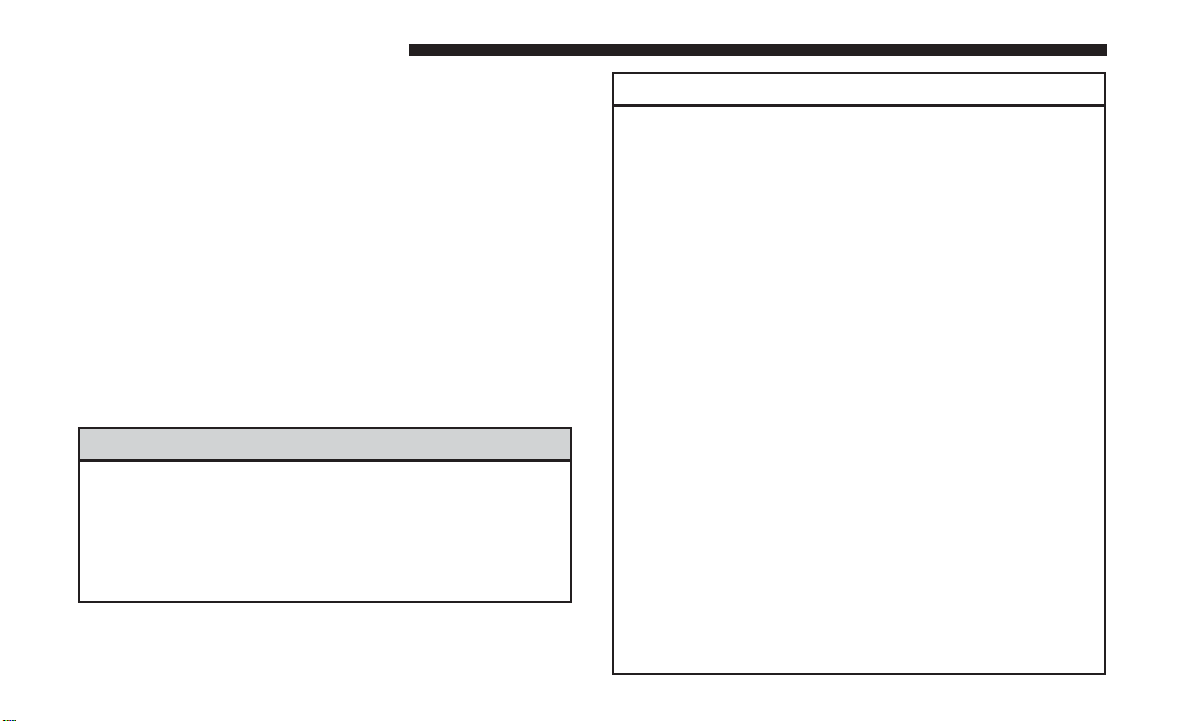Loading ...
Loading ...
Loading ...

4. Attempt to move the crossbar to ensure that it is locked
in position.
NOTE:
• To help control wind noise when installing the crossbars,
make sure the arrows marked on the underside of the
crossbars face the front of the vehicle.
• To help reduce the amount of wind noise when the
crossbars are not in use, fasten the front crossbar in the
fourth position from the front and the rear crossbar in
the eighth position. The tie down holes on the crossbar
ends should always be used to tie down the load. Check
the straps frequently to be sure that the load remains
securely attached.
WARNING!
Cargo must be securely tied down before driving your
vehicle. Improperly secured loads can fly off the ve-
hicle, particularly at high speeds, resulting in personal
injury or property damage. Follow the roof rack cau-
tions when carrying cargo on your roof rack.
CAUTION!
• To prevent damage to the roof of your vehicle, DO
NOT carry any loads on the roof rack without the
crossbars installed. The load should be secured and
placed on top of the crossbars, not directly on the
roof. If it is necessary to place the load on the roof,
place a blanket or other protective layer between the
load and the roof surface.
• Crossbars should remain equally spaced or parallel
at any roof rack position for proper function. Non-
compliance could result in damage to the roof rack,
cargo, and vehicle.
• To avoid damage to the roof rack and vehicle, do not
exceed the maximum roof rack load capacity of 150 lb
(68 kg). Always distribute heavy loads as evenly as
possible and secure the load appropriately.
• Long loads, which extend over the windshield, such
as wood panels or surfboards, should be secured to
both the front and rear of the vehicle.
• Travel at reduced speeds and turn corners carefully
when carrying large or heavy loads on the roof rack.
Wind forces, due to natural causes or nearby truck
traffic, can add sudden upward loads. This is espe-
cially true on large flat loads and may result in
damage to the cargo or your vehicle.
130 GETTING TO KNOW YOUR VEHICLE
Loading ...
Loading ...
Loading ...